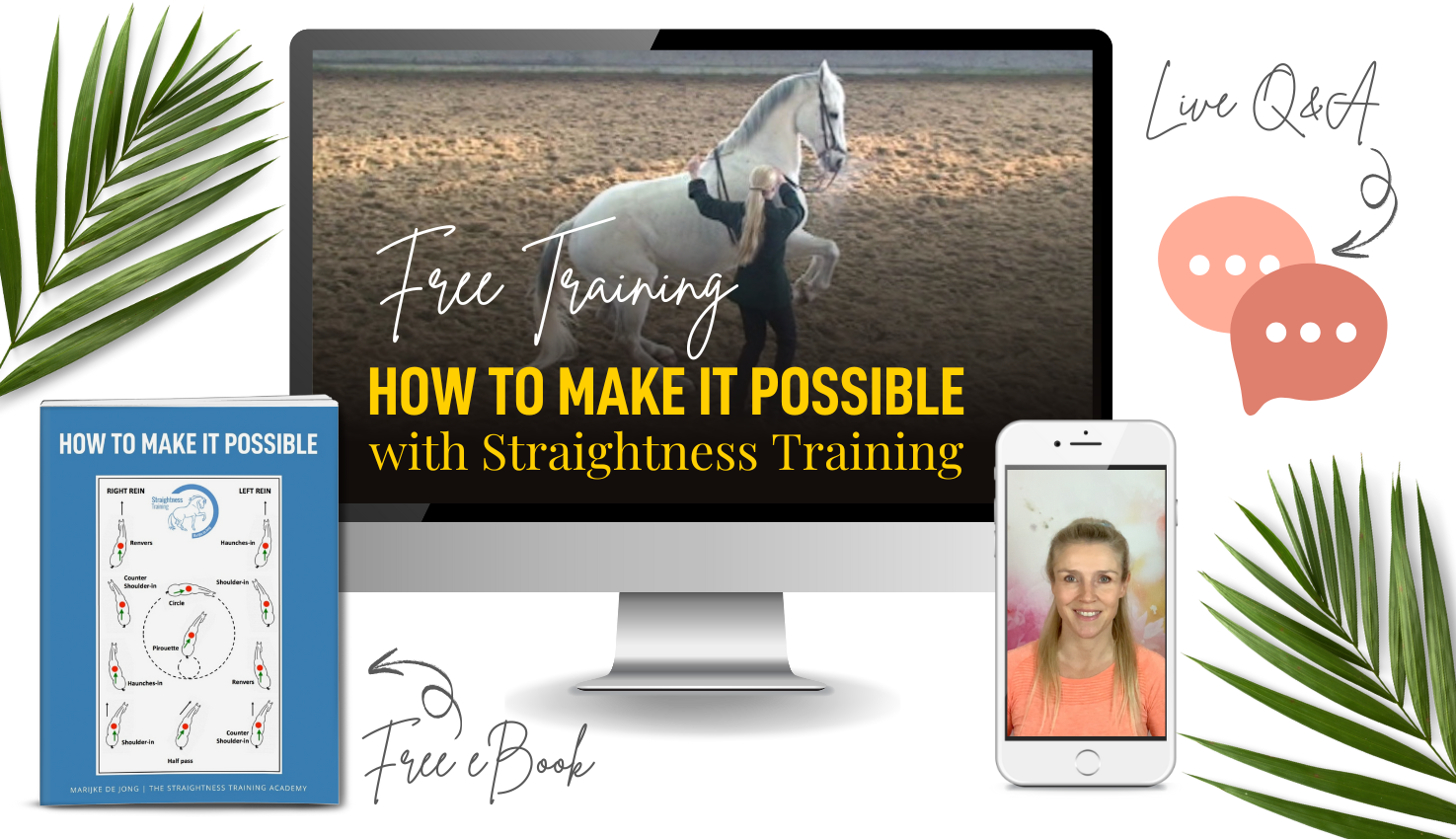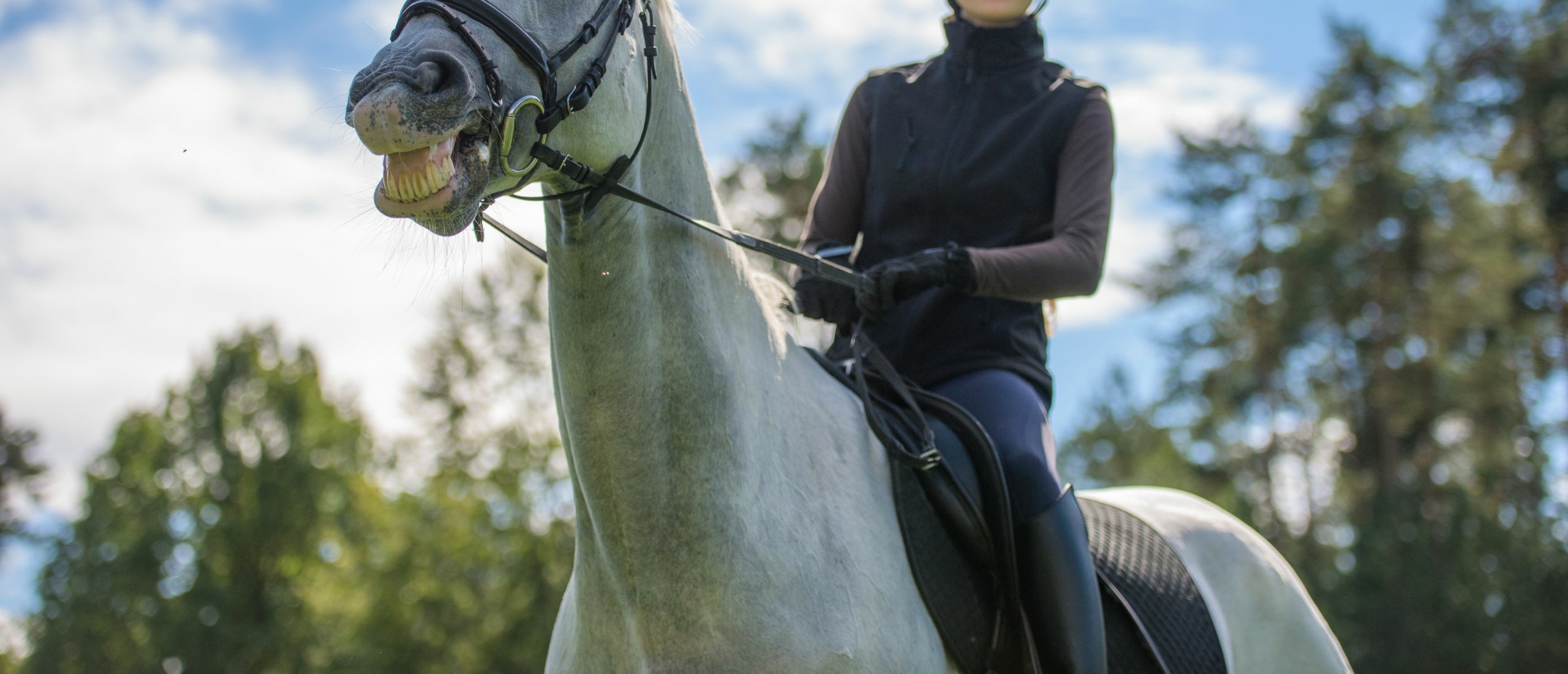
Symptoms & problems
- Is your horse tense whilst being ridden?
- Does he not want to turn to one side?
- Or does he always walk too fast or too slow?
- Does your horse often strike or does he even rear or buck?
- Perhaps he is often lame when you ride him?
- Does your riding sometimes feel more like a fight, because your horse always pulls at one side of the bit?
Could you answer some questions with ‘yes’?
Don't worry!
You are not the only one!
A lot of riders face these problems when they ride.
And natural asymmetry might be the cause!
I experienced a lot of issues, too, with my horse Maestro.
If you join my free webinar, I tell you more about the struggle with my so-called ‘problem’ horse Maestro.
What I’ve learned is that the natural asymmetry and the natural imbalance of the horse can lead to problems when the rider’s weight is added to a horse.
Let me show you this video first:
Video #1: Overview Natural Asymmetry
This video gives you an overview of symptoms and problems that can arise from natural asymmetry:
The problems can be categorized in:
Let’s take a closer look.
Riding problems:
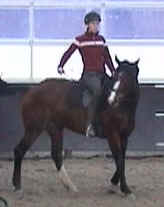
- Struggle to bend one way, the other is easy
- Can do an exercise to one side, but not to the other
- Lean on one rein
- Lean in, or out, on a circle
- Having a ‘hard’ mouth
- No suppleness/giving in the reins
- ‘Taking’ the bit
- High head carriage
- Heavy in the hand
- Balance issues
- Rider and saddle slide to one side
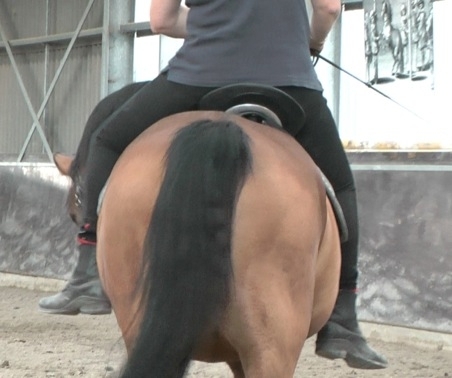
- No stretching of the neck forward-downwards
- Canter lead problems
- False canter
- Disunited canter
- Lateral walk or canter
- Does not stop square
- Cannot back up in a straight line
- Going forward reluctantly
- Speeding up automatically
- Prancing
- Rider cannot sit in trot

- Little shoulder freedom
- No pure tact
- Short steps
- Irregularities
- Bridle lameness
- Moving downhill
Mental and behavioral problems:
- Alertness
- Bad attitude
- Ears flat when doing a specific exercise
- Protesting
- Panicking
- Striking
- Bucking
- Rearing
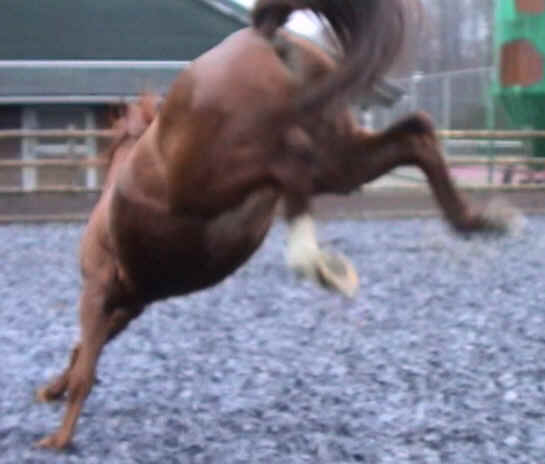
Physical symptoms & problems:
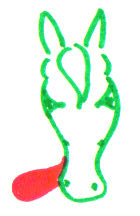
- Tilting the head
- Headshaking
- Grinding the teeth
- Tongue hangs out of the mouth
- Kissing spines
- Dull coat
- Lumps on the back
- Strain injuries in the front leg(s)
- Irregularities in the gaits
- Lameness
- Navicular disease
- SI joint problems
- Knee problems
- Hip problems
- Bone spavin
- Galls
Well, it’s quite a list, isn’t it?
Let me now show you the video about my horse Maestro, who had many of these issues:
Other causes
The problems listed above can of course also have other causes besides natural asymmetry.
The following aspects should always be considered first since the horse is a herd
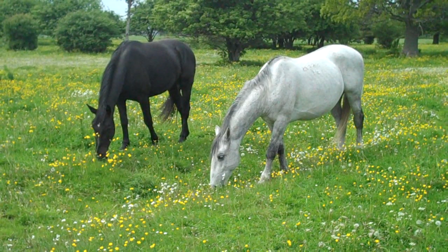
animal that needs movement and social contact:
- Proper feed, plenty of roughage
- Fresh air and sunlight
- Freedom to move in a paddock or field
- Contact with other horses
- A saddle, bridle and bit that fit correctly
- Using a block to mount the horse prevents back problems.
Now, what to do when you recognize one or more of the issues mentioned in this article?
The solution
When all possible causes of your problems are considered and specialists such as veterinarians, dentists, and others do not offer a solution, natural asymmetry might be considered as the cause of the problems.
Obviously, it is then important to reduce the natural asymmetry in order to make the problems disappear.
Straightness Training can help you and will guide you in the process of developing your horse symmetrically in body and limbs.
And if you need help in getting started, you’re warmly invited to my free webinar »

